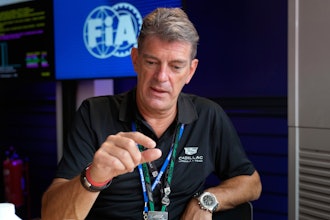Electron Beam Manufacturing Produces AUV Subsystems
When International Submarine Engineering's (ISE) supplier closed, the company lost access to the company's overseas titanium forging facility that used to produce parts for the company’s Arctic Explorer autonomous underwater vehicle. The old facility had even manufactured propellant tanks for the Russian space program.
Before it settled on a new vendor to make a titanium variable ballast (VB) tank for its AUV, the company heard about Sciaky, a metal 3D printing company that used its Electron Beam Additive Manufacturing (EBAM) technology to 3D print titanium propellant tanks for Lockheed Martin Space Systems in 2015.
The Electron Beam manufacturing technique is a deposition process that can produce parts from 8 inches to 19 feet in length, printing up to 20 pounds of metal per hour.
The titanium tank is a sub-system of ISE's Arctic Explorer. ISE already built two of them for Canadian agencies that used them to map the sea floor underneath the Arctic ice shelf. The Explorers are nearly 23 feet long and weigh more than 4,400 pounds. It uses this unique VB system to be able to park on the sea floor or hold itself on the underside of the ice during missions.
The move worked out well for ISE. The company cut production time in half, from 16 weeks to 8 weeks, and it reduced overall costs compared to retooling with a new forging supplier.
The new 3D printed tank is set to be installed onboard a new Arctic Explorer AUV that is headed to the University of Tasmania in the spring of 2017, which, after extensive trials and training operations, plans to deploy it in Antarctica.
Solar Still Makes Clean Water
Using plastic, carbon-dipped paper, and a little bit of sunlight, researchers from the University of Buffalo have created an inexpensive way to turn saltwater and contaminated water into potable water for personal use.
The team's spin on the solar still could address global drinking water shortages, especially in developing areas and regions affected by natural disasters. They call it the "solar vapor generator" and it uses heat converted from sunlight to clean or desalinate the water.
The process is pretty simple: The sun evaporates the water, leaving behind salt and bacteria. The water vapor is collected, cooled, and returns to a liquid state in a separate container.
The solar vapor generator is about the size of mini-fridge, and it's made of polystyrene foam (which also doubles as a flotation device) and porous paper coated in carbon black. The paper absorbs water; the carbon black absorbs sunlight; and it transforms the solar energy into heat used during evaporation.
The design is an improvement on solar stills currently on the market, which typically produce one-to-five liters of water per day with the same footprint. This design yields three-to-ten liters per day.
The much more efficient design could make the difference in the user’s quality of life, or even be the difference between life and death, depending on how dire the circumstances.
Boston Dynamics Working on 'Nightmare-Inducing' Robot
Yesterday, video leaked of Boston Dynamics' latest project, an upright robot that stands on two wheels. Its official name is Handle, though during the presentation, company founder Marc Raibert also referred to it as "nightmare inducing." After watching the video, I couldn't agree more.
Building off of previous work, such as SpotMini, the small robot dog that can clean your house, and Atlas, the humanoid robot that walks off the assembly line capable of performing simple tasks and navigating terrain, Handle is the company's latest experiment that combines wheels with legs.
According to Raibert, Handle is a self-balancing robot that is more efficient than a legged robot, and capable of carrying a "reasonably heavy" load.
The Handle has less degrees of freedom than Atlas, but it could serve as a less expensive option. The new robot received it's name because eventually, it is meant to Handle objects.
Compared to the Atlas, Handle seems much quicker and agile, as they proved with footage of it leaping over an obstacle.
Hopefully, Boston Dynamics will soon come forward with more information on the latest addition to its robot lineup.
This is Engineering By Design with David Mantey.




















